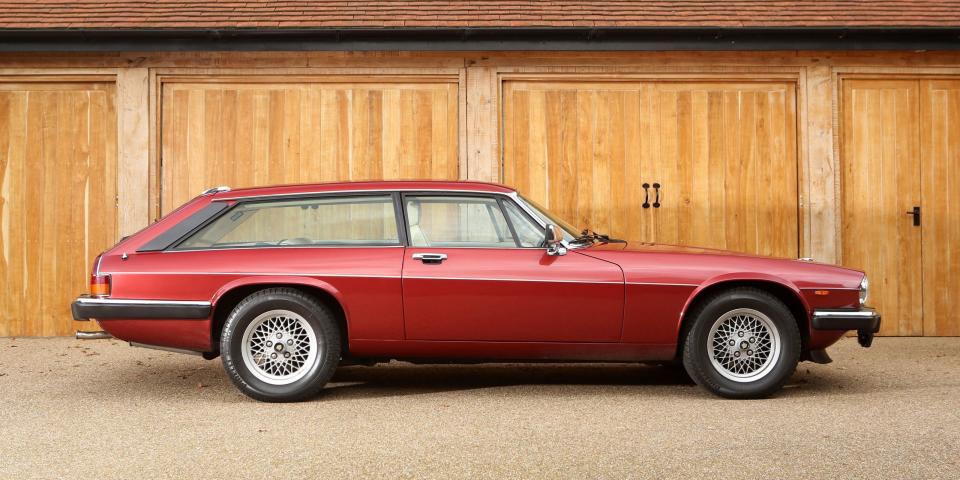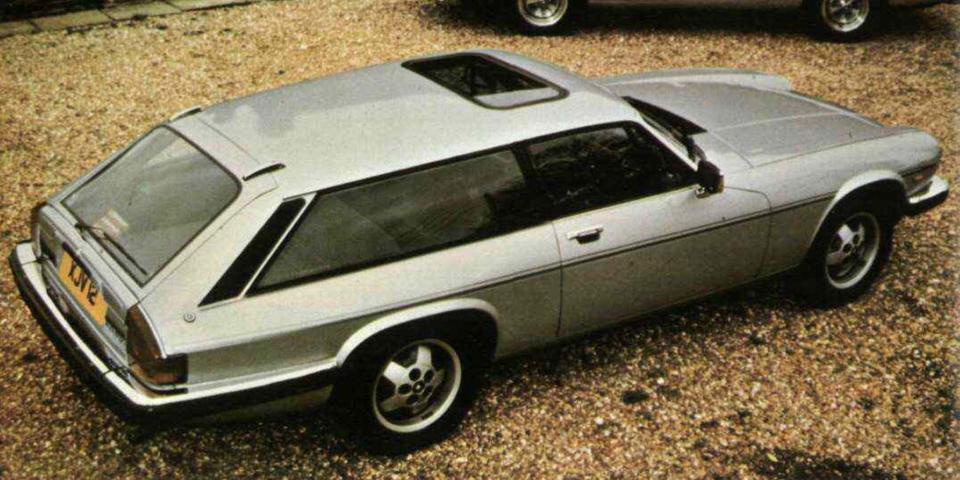The Lynx Eventer Was A Rare, Beautiful Shooting Brake That Made Perfect Sense

Lynx Engineering made its start in 1973, building faithful replicas of the Jaguar C- and D-Type in a converted farm outside of Sussex. Company heads Elgan Howell, Chris Keith-Lucas, and Guy Black never intended to become Jaguar specialists-the name had been taken from another stalwart British classic, the Riley Lynx-but through the course of original restorations, their expertise shone through. Itching to branch out, however, they figured that classic cars were quickly fading into the past.
It was not until a customer brought in an XJ6 to be reinvented into a convertible that the company switched directions. Droptop conversions were the way in, and the newly-debuted Jaguar XJS was the way forward-its flying buttresses warranted to be hacked off. Soon, Lynx Engineering was performing four-seater convertible conversions every two weeks. Business was flying. A niche had been carved. Then, to the disappointment of the company's leaders, Jaguar itself put an end to all of this.
Its own XJS convertible, introduced in 1988, certainly owed a few inspirational cues to Lynx's work; turns out, there aren't too many ways to skin a cat. (Ignore the oddball XJ-SC targa-roof variation, which lasted from 1983 to 1988, a rare and obscure sight.) Even though Jaguar's factory version sat just two, and Lynx was still getting orders,
So, the company went the other way. And instead of a convertible, it transformed the XJS into the Eventer estate-and created possibly the most British vehicle in existence.

A sleek V-12 wagon with three doors and all the wood and leather you could muster: how more quintessentially British could one get? But Lynx imbued the XJS with added visibility, rear-seat room, cargo room, and that whiff of exclusivity. Each conversion took 14 weeks. The attention to detail was magnificent. To develop the Eventer, Lynx cut off nearly all of the bodywork aft of the bulkhead, move the fuel tank, raise the rear floor to create a flat surface stretching all the way to the rear seats, and stiffen the suspension to compensate for the center of gravity being raised three inches.
This was still Grace, Space, and Pace, after all.
"Apart from a minor, irritating rattle caused by a loose trim panel," wrote Motorsport Magazine in 1983, "the Eventer prototype might well have been straight from the Jaguar factory: the high quality of the conversion is enhanced by the fact that Lynx has re-sprayed the car in its entirety without recourse to any vinyl roof treatment over the modified body panels."
The style was supposed to remain faithful to Jaguar's original intent as possible. Anyone who laid eyes on the Eventer would find that much to be true. Then again, with long and arrow-straight lines, "it did look like a single, unified design," continued Motorsport, "not as an afterthought adaption."
Ultimately, Lynx built around 67 Eventers. One can imagine that they are rare sights at auctions around the world: the original prototype, in fact, went up for auction in 2014, going for £28,750, a tick over $40,000. An Eventer conversion cost £6,950 in 1983 money, or nearly $24,000 today; of course, considering what British Gordon Gecko spent on a brand-new XJS, this seems paltry.
Jaguar may have disrupted Lynx's operations with its own convertible, but an official estate never rolled out of Coventry until the X-Type Sportwagon of 2004, culminating in the incredible XFR Sportbrake-and it may well never again.

 Yahoo Autos
Yahoo Autos 